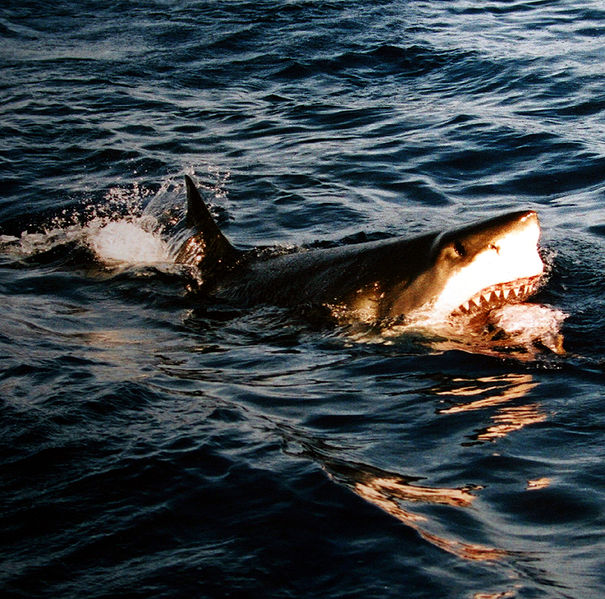Scientists have shed light on how those iconic ocean predators, great white sharks, go about catching their prey. It turns out they have something in common with human serial killers.
 Great white sharks lurk in spots that don't just guarantee them the best chance of encountering seals but they try and minimise the chances that seals will spot them before they launch an attack. They also take into account where other sharks are.
Great white sharks lurk in spots that don't just guarantee them the best chance of encountering seals but they try and minimise the chances that seals will spot them before they launch an attack. They also take into account where other sharks are.
The shark research team, lead by PhD student Neil Hammerschlag from the University of Miami in the US, took advantage of the way great white sharks in False Bay in South Africa attack their favourite food, cape seals. They target young solitary seals at the sea surface when light levels are low. They lurk at the sea floor, stalking the seals before ambushing them in a sudden vertical rush that propels both shark and seal out of the water. This strategy gives the sharks the best chance sneaking up on the seals and delivering a single fatal bite.
The researchers recorded 340 shark attacks which can be seen from quite a distance across the water and pinpointed the location using GPS units.
To analyse the data the researchers teamed up with Kim Rossmo, a criminal justice expert, who developed computer software to study the geographic patterns of human crimes including terrorist attacks and serial killers - a process called geographic profiling. By looking at where serial crimes take place, the software narrows down an "anchor point" for the criminal, usually their home or place of work. So Hammerschlag and the shark team plugged their hunting data into the same software.
The sharks attacked in non-random patterns and, like human criminals, had their own anchor points. The larger sharks tended to hang out in areas about 100 metres from areas where seals congregate, a vantage point that meant they didn't scare the sea colony, but from where they could easily pick off any seals that stray from the main group.
Smaller, younger sharks hunted over a wider area and were less successful in killing seals than larger sharks. This suggests that as they get older, sharks gain experience and learn to refine their search patterns, concentrating on areas where they are most successful. And it could be that the larger sharks aggressively keep out smaller sharks from the best hunting spots.
Unveiling some of the mystery behind these incredible predators is not only providing fascinating insights into how they successfully catch prey, but perhaps it will also help us understand more about areas where people would do best to avoid, in case they are mistaken for a seal, hanging around on the sea surface.
- Previous Urine test for appendicitis
- Next Flying dolphins










Comments
Add a comment